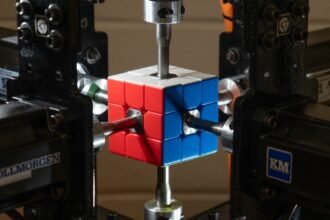In Quentin Tarantino’s 2003 film Kill Bill: Volume 1, the vengeful assassin known as The Bride (Uma Thurman) seeks out the legendary swordsmith Hattori Hanzō (Sonny Chiba) for a special sword. “I need Japanese steel,” she declares. “I have vermin to kill.” Hanzō, having vowed never to create weapons again, only agrees to forge her a new sword upon discovering that her target is his former student Bill (David Carradine). The resulting sword symbolizes his finest work. The Bride receives the exquisite weapon in a poignant ceremony, setting her on her deadly path. This moment stands out as one of the coolest scenes in an already cool film.
Fast forward twenty years, and another female assassin, Mizu (Maya Erskine), finds herself in a similar journey of vengeance in the Netflix animated series Blue Eye Samurai. Set in the Edo period, Mizu is a half-Japanese, half-white warrior who grapples with her rejection from Japanese society as she disguises herself as a man, seeking revenge against four white men, any of whom could be her father. Through flashbacks, we learn she was raised as a child by the blind swordsmith Eiji (Cary-Hiroyuki Tagawa), whom she affectionately calls Swordfather. She learns not only the art of smithing from him but also sword fighting from his customers. Mizu ultimately creates a sword forged from meteorite metal and embarks on her own quest for revenge.
[Ed. note: Major spoilers ahead for Blue Eye Samurai.]
The very first episode of Blue Eye Samurai pays a daring homage to Kill Bill. As Mizu undergoes training, Tomoyasu Hotei’s “Battle Without Honor or Humanity” — the iconic instrumental from Tarantino’s film that has become synonymous with determination and cool preparation — plays in the background. Referencing this beloved score in such an analogous narrative is both a bold acknowledgment and a potential risk. What if Blue Eye Samurai fails to meet expectations?
However, this could be seen as both a genuine tribute and a subtle misdirection by Noizumi and Green. The swordcrafting narrative in Blue Eye Samurai explores much deeper themes than its predecessor, revealing the creators’ broader intentions.
The concept of a swordcrafting story possesses a timeless, mythic appeal. It serves as a pivotal moment in a hero’s journey, allowing reflection and fortitude; the crafting of the weapon parallels the hero’s own development—both are “tempered” and









